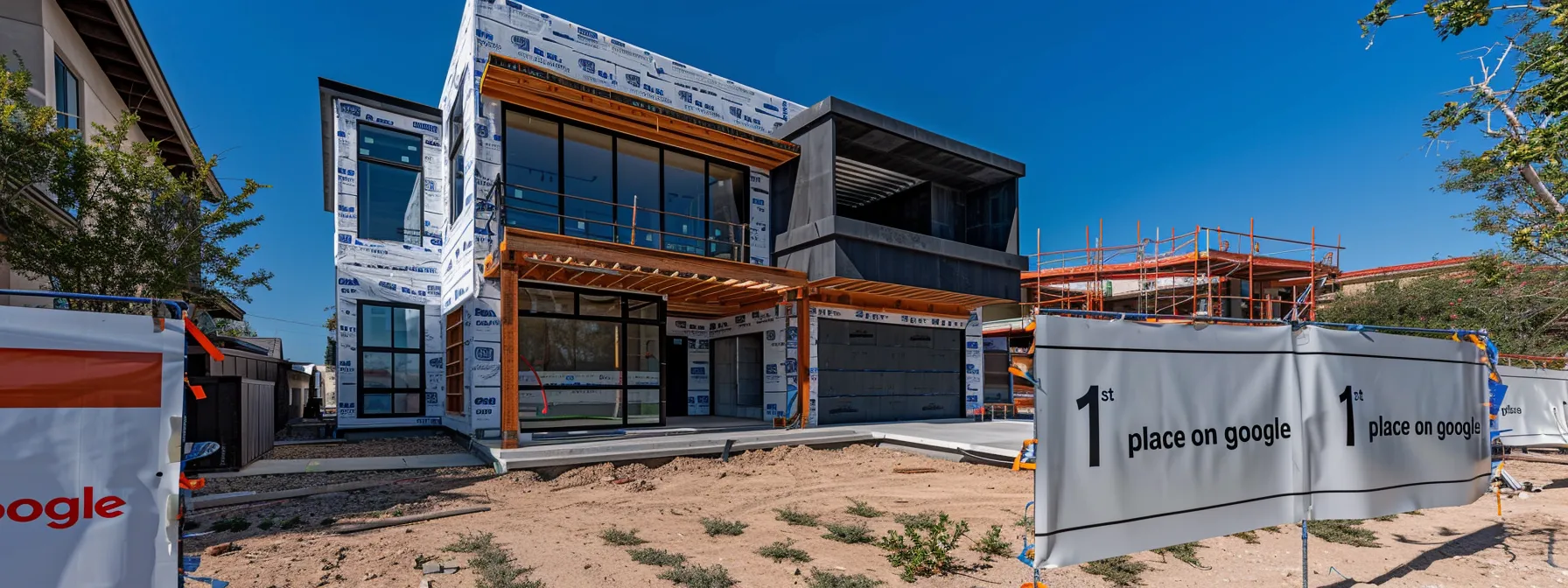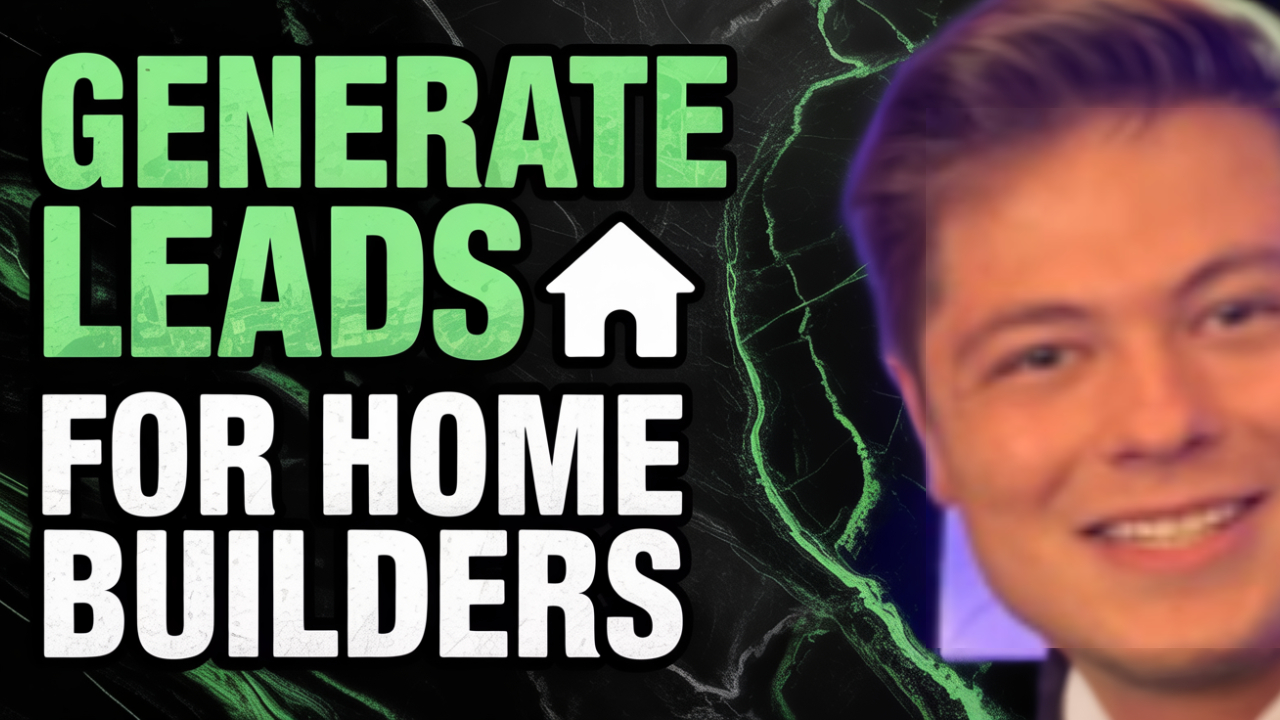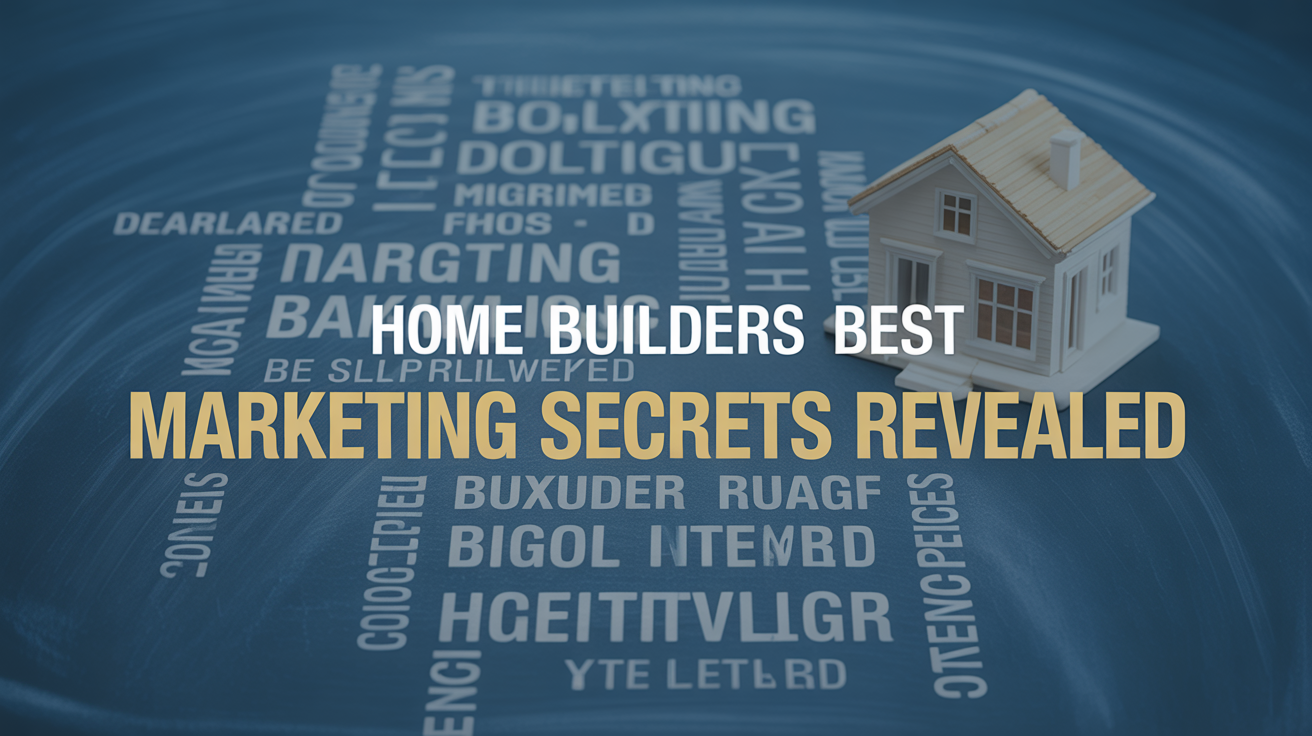Many home builders struggle to connect with potential buyers effectively. Did you know that targeted email campaigns can significantly improve lead conversion rates? This article will explore crucial strategies for maximizing home builder email campaigns, such as building a high-quality email list, creating engaging content, and personalizing your outreach. By implementing these tactics, builders can reduce bounce rates and better meet the preferences of their audience, ultimately driving marketing success. If improving your email marketing automation and engagement is a challenge, this content will provide practical solutions to elevate your efforts.
Key Takeaways
- Email marketing enhances engagement and builds trust with potential home buyers through consistent communication
- Segmented campaigns lead to higher open and click-through rates, promoting relevant messaging
- Automating personalized email sequences nurtures leads effectively throughout the buying journey
- Regular analysis of metrics helps home builders refine strategies and improve campaign performance
- Incorporating industry trends into email content keeps messaging relevant and appealing to potential buyers
Understand the Role of Email Marketing in the Home Building Industry

Email marketing is crucial for home builders, offering benefits that extend beyond simple communication. By recognizing the advantages, such as improved open rates and engagement, builders can influence buyer decisions through targeted campaigns tailored to specific personas. Additionally, comparing email marketing to other strategies highlights its unique propositions and effectiveness. Addressing common challenges and setting clear goals can drive campaign success.
Recognize the Benefits for Home Builders
Home builders can significantly benefit from the ability to send marketing emails that engage potential buyers effectively. By utilizing tools like Constant Contact, builders can create informative newsletters that keep their audience informed about new developments, offers, and community events. This consistent communication not only fosters relationships but also positions the builder as a trusted resource in the home-buying journey.
Another advantage of email marketing is its accessibility and potential for targeted outreach. A well-maintained mailing list allows builders to segment their audience based on preferences and behaviors, ensuring that the right message reaches the right people. By understanding the demographics and needs of their prospects, builders can tailor their content to address specific pain points, ultimately enhancing the buyer’s experience and increasing conversion rates.
Influence Buyer Decisions With Targeted Emails
Targeted emails serve as a powerful asset in a home builder’s marketing strategy by allowing organizations to connect with potential buyers on a more personal level. By analyzing data from previous campaigns, home builders can gain valuable insights into customer preferences, enabling them to craft tailored messages that grab attention and resonate with their audience. This customization not only increases the likelihood of engagement but also establishes a relationship where prospects feel valued and informed.
Moreover, effective email marketing can help builders guide buyer decisions by providing timely information that answers questions and addresses concerns. For instance, a well-timed email featuring new developments, financing options, or upcoming open houses acts as a bookmark in a buyer’s journey, helping to remind them of the builder’s offerings when they are ready to make a decision. By positioning themselves as reliable sources of information, home builders can significantly influence the buying process and foster trust, ultimately leading to increased conversion rates.
Compare Email Marketing to Other Strategies
Email marketing stands out compared to other marketing strategies, particularly due to its high return on investment (ROI). Studies indicate that for every dollar spent on email marketing, it can generate an average return of $42, showcasing its effectiveness in enhancing customer satisfaction. This results in a stronger reputation for home builders, as they can frequently engage with their audience while providing valuable information tailored to buyer behavior.
In contrast to social media or direct mail campaigns, which can be less targeted, email marketing benefits from advanced marketing automation tools. These tools enable home builders to segment their audience based on behavior and preferences, allowing for personalized communications that resonate with potential buyers. By utilizing data-driven insights, builders can enhance their marketing efforts, ensuring their messages are not only timely but also relevant, ultimately leading to improved conversion rates and buyer loyalty.
Identify Common Challenges and Solutions
Effective email marketing in the home building industry faces challenges such as maintaining an updated database and ensuring compliance with privacy policies. Builders often struggle with keeping their contact lists current, which can lead to low engagement rates and diminished credibility. To overcome this, home builders should implement regular database cleaning practices, removing inactive contacts and verifying existing information. This proactive approach not only enhances the quality of communications but also positively influences the overall customer experience.
Another challenge stems from delivering relevant content that resonates with the audience. Builders may find it difficult to tailor their messaging to different segments of their database, potentially resulting in lower engagement. To address this issue, home builders can invest in data analytics tools that track customer interactions and preferences. By understanding buyer behaviors and adjusting email content accordingly, builders can create more relevant, personalized campaigns that improve customer satisfaction and bolster the builder’s credibility in the market.
Set Clear Goals for Campaign Success
Setting clear goals is essential for a successful email marketing campaign in the home building industry. Builders should define specific objectives such as increasing brand awareness, boosting lead generation, or growing their email subscriber list. By having these goals in mind, builders can tailor their email content and strategies to meet those targets, ultimately leading to a more focused approach that enhances user experience and fosters engagement.
For example, a home builder aiming to increase brand awareness might create a series of informative emails showcasing their latest projects and community features. By tracking metrics related to open rates and click-throughs, builders can assess the effectiveness of their campaigns and refine their messaging accordingly. This data-driven approach ensures that builders not only reach their goals but also create a positive user experience that resonates with their audience.
Email marketing matters. Now, it’s time to focus on building a strong list of potential buyers who are eager to hear from you.
Build a High-Quality Email List of Potential Buyers

Build a High-Quality Email List of Potential Buyers
Attracting leads is essential for successful email marketing campaigns in the home building industry. Employ effective strategies, including sign-up forms and landing pages, to encourage potential buyers to join the subscriber list. Segmenting the list enables targeted outreach, while growing and maintaining your subscriber base ensures consistent engagement. Additionally, compliance with email marketing regulations is critical to protect both the builder’s reputation and the audience’s trust.
Attract Leads With Effective Strategies
To attract leads effectively, home builders must implement strategic methods that initiate customer engagement. Utilizing sign-up forms on their websites and landing pages can significantly enhance consent and interest from potential buyers. By offering valuable resources, such as eBooks on home buying tips or exclusive updates on new projects, builders encourage visitors to subscribe, thereby feeding the top of the marketing funnel with qualified leads eager for information.
Another key approach involves utilizing social media channels to drive traffic to the email subscription sign-up. Home builders can run targeted advertising campaigns that highlight the benefits of joining their email list, ultimately improving return on investment. Engaging content on platforms like Facebook or Instagram can create meaningful interactions, fostering relationships that prompt prospective buyers to enter the funnel and stay connected, resulting in a responsive and high-quality email database.
Utilize Sign-Up Forms and Landing Pages
Utilizing sign-up forms and landing pages is essential for home builders looking to build a high-quality email list of potential buyers. By strategically placing these forms on their websites, builders can capture interest from visitors who are eager to receive updates about new projects and industry insights. These forms should clearly communicate the builder’s value proposition, enticing users to subscribe by highlighting the benefits they will receive, such as exclusive content or early access to promotions. This approach not only increases engagement but also ensures that the contact information collected aligns with the target market.
Furthermore, compliance with email marketing regulation is critical when implementing sign-up forms. Home builders must reassure potential subscribers that their information will be protected and used responsibly. Incorporating clear privacy policies and consent statements builds trust and encourages more visitors to join the mailing list. By combining well-designed landing pages that offer compelling offers and sign-up forms that foster transparency, home builders can effectively enhance their marketing campaigns and create a solid foundation for future engagement with prospective buyers.
Segment Your List for Targeted Outreach
Segmenting the email list is a vital step for home builders aiming to enhance their email marketing efforts. By organizing contacts based on demographics and behaviors, builders can focus on their unique selling proposition. This targeted outreach improves engagement, as prospects receive content that directly addresses their needs, ultimately leading to higher conversion rates. Statistics show that segmented campaigns achieve 14% higher open rates and 10% better click-through rates, emphasizing the importance of understanding the audience.
Utilizing landing pages to capture specific information can streamline the list-building process significantly. Home builders might consider creating landing pages tailored for various audience segments, offering targeted promotions or resources that align with their preferences. By efficiently gathering relevant data during the sign-up process, builders can enhance their email marketing strategies, ensuring the right message reaches the right potential buyers at the right time. This approach not only strengthens connections but also fosters trust in the builder’s brand.
- Identify key demographics of potential buyers.
- Utilize landing pages for effective data collection.
- Emphasize the unique selling proposition in communications.
- Analyze statistics to gauge campaign performance.
- Tailor content to resonate with different segments.
Grow and Maintain Your Subscriber Base
To grow and maintain a subscriber base, home builders should focus on creating value-driven incentives that act as magnets for potential customers. Strategies such as offering exclusive insights into new construction projects, financing options, or industry news can entice users to sign up for email campaigns. This approach not only increases the quantity of subscribers but also enhances loyalty among existing customers.
Regularly engaging with subscribers through targeted email campaigns can significantly boost retention rates. Builders can segment their lists based on customer preferences and behaviors, ensuring that communications feel personal and relevant. By consistently providing valuable content and tailored offerings, home builders can foster stronger relationships with their audience and turn potential buyers into loyal customers:
- Offer exclusive insights on construction projects.
- Implement value-driven incentives for sign-ups.
- Utilize targeted campaigns for better engagement.
- Segment lists for personalized communication.
- Maintain consistent interaction to foster loyalty.
Comply With Email Marketing Regulations
Complying with email marketing regulations is essential for home builders to maintain their credibility and protect their reputation. Adhering to laws such as the CAN-SPAM Act ensures that email marketing campaigns not only respect consumer privacy but also increase the likelihood of engagement. For instance, builders can enhance their data collection processes by implementing questionnaires that provide insights into customer preferences while ensuring participants are aware of how their information will be used.
Additionally, understanding regulations related to mobile marketing is crucial for optimizing email campaigns on various platforms. By integrating analytics tools, builders can measure the impact of their email marketing efforts and adjust their strategies accordingly. A focus on compliance not only helps avoid legal penalties but also fosters trust with potential buyers, leading to more effective email communication and long-term relationships.
A solid list of potential buyers is just the beginning. Next, it’s time to craft emails that not only capture attention but also drive action.
Create Engaging Emails That Inspire Action

Crafting engaging emails is essential for home builders aiming to inspire action and maximize marketing success. This section will cover key strategies such as creating compelling subject lines that capture attention, writing persuasive and relevant content that resonates with consumers, and incorporating visuals that enhance engagement. Clear calls-to-action and mobile optimization will also be discussed, ensuring that emails deliver brand messages effectively across various email clients, while leveraging social proof and innovation to build trust.
Craft Compelling Subject Lines
Crafting compelling subject lines is critical for home builders seeking to increase the effectiveness of their email marketing campaigns. A well-designed subject line serves as the first impression and can significantly impact open rates. By including actionable phrases that highlight the value offered, such as a strong call to action, home builders can entice their target audience to engage with the content. For example, prompting recipients to “Discover Our Exclusive Home Financing Resource” can create a sense of urgency and interest, ultimately driving revenue through increased engagement.
Furthermore, subject lines should reflect the overall workflow of the email’s message, aligning with the needs and preferences of the target audience. By utilizing concise language that communicates specific benefits, builders can capture attention and encourage recipients to open the email and take action. Incorporating keywords like “limited-time offer” or “latest community updates” can enhance relevance, ensuring that the email resonates with the audience. This strategic approach to subject lines not only boosts open rates but also cultivates a relationship where homeowners feel informed and invested in the builder’s offerings.
Write Persuasive and Relevant Content
Writing persuasive and relevant content is vital for the success of email communication in a marketing campaign. Home builders should focus on creating messages that address the specific needs and interests of their audience. By understanding the customers’ preferences and pain points, builders can develop engaging content that encourages prospective buyers to take action. This tailored approach not only enhances the effectiveness of the marketing campaign but also establishes a meaningful connection with potential clients.
Moreover, maintaining a consistent sequence and frequency in content creation is essential for driving engagement over time. For instance, a home builder might implement a content calendar that outlines scheduled topics and themes, ensuring that messages remain relevant and fresh. This strategy helps in keeping the audience informed and interested, ultimately leading to stronger responses from recipients. By delivering valuable insights through well-structured email campaigns, builders can effectively inspire action among potential buyers:
| Sequence | Content Ideas | Frequency |
|---|---|---|
| 1 | Information on new projects | Monthly |
| 2 | Home buying tips | Bi-weekly |
| 3 | Financing options | Weekly |
| 4 | Community events | As needed |
Incorporate Visuals and Multimedia
Incorporating visuals and multimedia into email campaigns enhances engagement and captures the attention of potential homebuyers. High-quality images of completed projects, for instance, can showcase a builder’s craftsmanship and appeal to a buyer’s aesthetic preferences. Additionally, including buttons that prompt actions, such as “Schedule a Tour,” can lead to higher interaction rates and move prospects further along their journey. This not only supports marketing objectives but also aligns with search engine optimization practices by driving traffic to the builder’s website.
Testimonials presented through visual formats, like short video clips or eye-catching quotes, lend credibility to a builder’s email campaigns. Prospective buyers are often influenced by the positive experiences of others, so featuring satisfied homeowners can reinforce trust and encourage decision-making. By strategically combining these elements within email communications, home builders can effectively inspire action and make a lasting impression, ultimately leading to increased conversion rates and sustained client relationships.
Include Clear Calls-to-Action
Including clear calls-to-action (CTAs) in email marketing campaigns is vital for home builders looking to drive engagement and conversions. CTAs guide potential buyers on the next steps, whether it’s scheduling a tour, downloading a guide, or signing up for a newsletter. By utilizing straightforward language and visually distinct buttons, builders can effectively capture attention and encourage recipients to take immediate action.
To maximize the impact of CTAs, home builders should test various placements and phrasings within their emails. For instance, a compelling CTA like “See Our Latest Designs” placed prominently can lead to higher click-through rates. By regularly analyzing the performance of these CTAs, builders can refine their strategies, ensuring that each email not only informs but also compels the audience to engage further and move along the buying journey.
Optimize Emails for Mobile Devices
Optimizing emails for mobile devices is vital for home builders looking to enhance user engagement and drive conversions. A significant portion of email recipients access their messages via smartphones, so ensuring that emails are mobile-responsive can dramatically improve open and click-through rates. This optimization involves using a clean layout, larger font sizes, and button designs that are easy to tap, allowing potential buyers to navigate content effortlessly and take action without frustration.
Additionally, utilizing short, impactful subject lines and relevant previews can capture attention quickly on smaller screens. Home builders should consider the mobile user’s experience by placing the most important information at the top, ensuring clarity in messaging. By focusing on mobile optimization, builders can create seamless interactions that resonate with on-the-go clients, ultimately fostering deeper connections and encouraging prospective buyers to engage with their offerings more readily.
Engaging emails spark interest, but personalization drives connection. By tailoring your message, you invite your audience into a conversation that feels meaningful.
Personalize Your Email Campaigns for Greater Engagement

Personalizing email campaigns is essential for home builders seeking to enhance engagement and drive marketing success. This section will focus on effectively leveraging customer data to create tailored experiences, implementing dynamic content personalization that resonates with recipients, and automating personalized email sequences for timely communication. Additionally, it will address the importance of A/B testing to refine strategies and re-engaging inactive subscribers to maintain a robust subscriber base.
Leverage Customer Data Effectively
Leveraging customer data is essential for home builders looking to enhance their email marketing efforts. By collecting and analyzing information such as demographics, preferences, and past interactions, builders can create highly personalized content that speaks directly to potential buyers’ needs. For instance, if a builder identifies a segment of their audience interested in eco-friendly homes, they can tailor their emails to showcase sustainable building practices, thus driving engagement and interest.
Effective use of customer data also involves segmenting the email list to ensure targeted messaging. By sending relevant content to specific groups, home builders can improve open and click-through rates significantly. For example, builders can develop separate campaigns for first-time homebuyers and seasoned investors, addressing their distinct concerns and inquiries. This strategic approach not only enhances communication but also builds trust, ultimately guiding potential customers toward a decision that aligns with their goals.
Use Dynamic Content Personalization
Dynamic content personalization significantly enhances email campaigns for home builders by allowing messages to resonate with individual recipients. By using customer data such as location, previous interactions, and preferences, builders can tailor email content that speaks directly to the needs and interests of potential buyers. For instance, a builder might showcase properties in a specific area to recipients based on their geographic data, making the communication more relevant and engaging.
This approach not only increases the chances of engagement but also builds a stronger connection between builders and their audience. Personalization can extend to recommending content based on past behavior, such as featuring financing options for first-time homebuyers or highlighting luxury features for higher-end clientele. By implementing dynamic content strategies, home builders can create a more personalized and effective email marketing experience that ultimately boosts conversion rates and fosters customer loyalty.
Automate Personalized Email Sequences
Automating personalized email sequences allows home builders to effectively nurture leads throughout the buying journey. By leveraging customer data, builders can set up workflows that deliver tailored content based on specific triggers, such as inquiries about particular properties or attendance at open houses. This level of personalization enhances engagement, ensuring that potential buyers receive relevant information at the right time, which ultimately fosters a deeper connection with the builder’s brand.
Incorporating automated email sequences can significantly streamline communication processes and improve marketing efficiency. For instance, when a potential buyer signs up for updates, they can instantly receive a welcome email followed by a series of informative messages related to their preferences. By automating these sequences, builders not only save time but also maintain consistent engagement with prospects, addressing their needs and pain points effectively:
- Utilize customer data for targeted automation.
- Set up workflows for timely content delivery.
- Enhance engagement through personalized messaging.
- Streamline communication processes with automation.
Conduct a/B Testing to Improve Results
Conducting A/B testing is an effective strategy for home builders looking to enhance their email campaigns and achieve better results. By comparing two different versions of an email, whether it’s the subject line or call-to-action, builders can gather valuable data on what resonates with their audience. For example, testing a subject line that emphasizes a special offer against one that highlights new home features can reveal which message receives higher open rates, allowing builders to fine-tune their approach accordingly.
Incorporating A/B testing into email marketing campaigns enables home builders to make data-driven decisions that increase engagement and conversion rates. By regularly analyzing the results of these tests, builders can identify trends in customer preferences and adjust their marketing strategies to align with buyer expectations. This not only enhances the effectiveness of email communications but also fosters a deeper connection with potential clients, ultimately leading to higher satisfaction and loyalty.
Re-Engage Inactive Subscribers Successfully
Re-engaging inactive subscribers is essential for home builders aiming to maximize their email campaigns. One effective approach involves sending a personalized re-engagement email that addresses the subscriber directly, acknowledging their prior interest and inviting them to revisit the builder’s offerings. By highlighting recent developments, new projects, or exclusive promotions, builders can rekindle interest and encourage these potential buyers to engage with their content once again.
Furthermore, offering incentives can significantly enhance re-engagement efforts. Home builders may consider providing exclusive access to a webinar on home buying tips or a downloadable guide that showcases innovative design trends. These valuable resources not only provide tangible benefits to the subscriber but also demonstrate the builder’s commitment to meeting their needs—ultimately fostering a renewed connection and increasing the likelihood of conversion.
Personalizing your email campaigns is just the beginning. Next, it’s time to measure their impact and refine your approach for even better results.
Measure and Optimize Campaign Performance

To maximize the effectiveness of home builder email campaigns, it is essential to measure and optimize performance. This involves tracking key email marketing metrics, analyzing open and click-through rates, and using data insights to refine strategies. Implementing feedback allows for continuous improvement, while adjusting campaigns based on performance data ensures that builders meet their marketing objectives effectively.
Track Key Email Marketing Metrics
Tracking key email marketing metrics is vital for home builders aiming to assess the effectiveness of their campaigns. Metrics such as open rates, click-through rates, and conversion rates provide valuable insights into customer engagement and content relevancy. By regularly monitoring these statistics, builders can identify which campaigns resonate most with their audience, enabling them to adjust their strategies for better performance.
Moreover, understanding metrics allows home builders to refine their email content and improve targeting efforts. For instance, if a specific email campaign shows high open rates but low click-through rates, builders can analyze the call-to-action and content to optimize future communications. This data-driven approach not only enhances customer satisfaction but also increases the likelihood of conversions, fostering a successful email marketing strategy that meets the needs of potential buyers.
Analyze Open and Click-Through Rates
Analyzing open and click-through rates is vital for home builders aiming to refine their email marketing strategies. Open rates provide insights into how well the subject lines are performing, indicating whether the audience finds the content engaging enough to open. For instance, a home builder can compare two different subject lines to determine which resonates better with their target demographic, ultimately enhancing future campaigns by applying this knowledge.
Click-through rates offer deeper insights into the content’s effectiveness by revealing how many recipients took action on the information provided. By monitoring these metrics regularly, builders can identify topics that generate interest, allowing them to tailor future emails accordingly. For example, if a campaign featuring eco-friendly home designs yields high click-through rates, home builders can leverage this data to focus future communications on similar themes, thereby fostering higher engagement and driving potential buyers closer to their decision-making process:
| Metric | Definition | Importance |
|---|---|---|
| Open Rate | The percentage of recipients who opened the email. | Indicates subject line effectiveness and audience interest. |
| Click-Through Rate | The percentage of recipients who clicked on links within the email. | Measures engagement and content relevance to the audience. |
Use Data Insights to Refine Strategies
Home builders can leverage data insights to enhance the effectiveness of their email marketing campaigns. By analyzing key metrics such as open rates and click-through rates, builders gain valuable understanding of which content resonates with their audience. For instance, if homes featuring energy-efficient designs consistently drive higher engagement, builders can prioritize this information in future campaigns to meet the interests of potential buyers.
Additionally, using customer segmentation based on data gathered from past campaigns allows builders to tailor their messaging more effectively. By targeting specific groups with content that speaks directly to their preferences and needs, such as first-time homebuyer tips or luxury home features, builders can significantly improve engagement rates. This approach not only fosters lasting relationships with prospects but also enhances the likelihood of conversion, ultimately driving greater marketing success for the builder.
Implement Feedback for Continuous Improvement
Implementing feedback in email marketing is essential for home builders aiming to optimize their campaigns. By actively seeking responses from subscribers and analyzing data from past email interactions, builders can gain insights into what resonates with their audience. For instance, positive feedback about certain topics can guide the development of future content, ensuring it aligns with the preferences of potential buyers.
Additionally, surveys and polls can provide direct input on subscriber interests, allowing builders to adjust their strategies based on real customer needs. This responsive approach not only reinforces the builder’s commitment to understanding their audience but also enhances engagement and loyalty. By leveraging feedback effectively, home builders can create more effective email campaigns that drive higher conversion rates:
- Collect feedback through surveys and polls.
- Analyze subscriber engagement metrics for insights.
- Adjust content strategies based on audience preferences.
Adjust Campaigns Based on Performance Data
Adjusting email campaigns based on performance data is crucial for home builders aiming to enhance their marketing effectiveness. By regularly reviewing key metrics such as open rates and click-through rates, builders can identify trends and insights that indicate what content resonates best with their audience. For instance, if data shows that emails featuring seasonal promotions outperform standard newsletters, builders should prioritize these targeted themes to capture more engagement and drive interest in their offerings.
Additionally, responding to performance data allows home builders to refine their messaging continuously. If a particular call-to-action consistently yields low click rates, it may be necessary to rephrase or reposition it for greater impact. By employing a data-driven approach, home builders can make informed adjustments to their email strategies, ensuring that their campaigns not only meet but exceed the expectations of their audience, ultimately leading to increased conversions and stronger customer relationships.
In the world of marketing, measures and numbers tell a story. Now, it’s time to uncover the best practices that can turn those insights into solid successes.
Implement Best Practices for Marketing Success

To optimize email campaigns and achieve elevated marketing success, home builders should implement best practices. This includes determining optimal timing and frequency for sending emails, ensuring high email deliverability rates, and staying informed on industry trends. Additionally, integrating email with other marketing channels and learning from successful campaign case studies can enhance overall effectiveness and engagement.
Determine Optimal Timing and Frequency
Determining the optimal timing and frequency for sending emails is vital for home builders seeking to enhance their marketing impact. Research indicates that emails sent mid-week and in the late morning yield higher open rates, as potential buyers are typically more receptive during these periods. By analyzing past campaign performance, builders can identify patterns that indicate when their audience is most engaged, allowing for a strategic approach that aligns with buyer behaviors and increases overall interaction.
In addition to timing, the frequency of emails plays a crucial role in maintaining audience interest without overwhelming recipients. Home builders should aim for a balanced approach, sending emails consistently but avoiding excessive communication. Testing different schedules, such as bi-weekly newsletters or monthly updates, can help builders find the right cadence that keeps potential buyers informed and engaged while respecting their inbox limitations. This thoughtful strategy not only enhances customer relationships but also fosters a loyal subscriber base, driving conversions over time.
Ensure High Email Deliverability Rates
Ensuring high email deliverability rates is critical for home builders seeking to maximize their email campaigns. To improve deliverability, builders should maintain clean email lists by regularly removing inactive or bounced email addresses. This proactive approach not only enhances the quality of communications but also helps in building a positive sender reputation, which is crucial for reaching prospective buyers effectively.
Furthermore, implementing authentication protocols such as SPF, DKIM, and DMARC can significantly improve the chances of emails landing in the inbox instead of the spam folder. These measures demonstrate to internet service providers that the builder’s emails are legitimate and safe for recipients. By focusing on these best practices, home builders can enhance engagement, ensuring their marketing messages effectively reach their target audience.
Stay Informed on Industry Trends
Staying informed on industry trends is vital for home builders looking to refine their email marketing campaigns. By monitoring changes in market dynamics, consumer preferences, and emerging technologies, builders can tailor their email content to align with current interests. For example, builders may identify a growing demand for sustainable building practices, allowing them to highlight eco-friendly features in their communications, thereby enhancing engagement and relevance.
Moreover, leveraging industry insights can help home builders differentiate their offerings and improve customer interaction. Analyzing competitor strategies and successful email campaigns within the home building sector can provide valuable lessons on effective messaging and customer engagement. By implementing changes based on these trends and analyses, builders can position their marketing efforts to better resonate with their audience, contributing to increased conversion rates and long-term success:
| Trend | Implication for Email Marketing |
|---|---|
| Sustainable Building Practices | Highlight eco-friendly features to attract environmentally conscious buyers. |
| Personalization | Use customer data to create tailored email content that resonates with individual preferences. |
| Technology Integration | Incorporate virtual tours and interactive elements in emails to enhance user experience. |
Integrate Email With Other Marketing Channels
Integrating email marketing with other marketing channels is essential for home builders seeking to enhance overall effectiveness. By coordinating email campaigns with social media efforts, builders can leverage platforms such as Facebook and Instagram to drive traffic to email sign-up forms and increase engagement. For instance, promoting exclusive content or offers through social media posts can encourage potential buyers to subscribe to email newsletters, creating a seamless connection between different marketing strategies.
Furthermore, incorporating content from email newsletters into the website can support the builder’s branding and messaging consistency. Sharing email insights or snippets in blog posts allows visitors to engage with the content on various levels, reinforcing the value the builder provides. This multi-channel approach not only broadens the reach of marketing efforts but also caters to different audience preferences, ultimately driving higher engagement and conversion rates among potential buyers.
Learn From Successful Campaign Case Studies
Learning from successful email campaign case studies can provide home builders with valuable insights to refine their marketing strategies. For example, a prominent builder implemented a series of segmented email campaigns targeting first-time homebuyers, which highlighted financing options and key home features. This targeted approach led to a significant increase in engagement rates and conversions, demonstrating the importance of audience segmentation in maximizing campaign effectiveness.
Additionally, reviewing case studies of campaigns that integrated customer feedback can illustrate the impact of adapting content based on subscriber preferences. A builder that regularly solicited input through surveys and polls was able to tailor its email content to better meet the interests of its audience. This practice not only boosted open and click-through rates but also strengthened relationships with potential buyers, emphasizing the effectiveness of responsive email marketing strategies.
Conclusion
Maximizing email campaigns is essential for home builders aiming for elevated marketing success. By leveraging targeted, personalized content, builders can effectively engage potential buyers, influence their decisions, and ultimately increase conversion rates. Implementing best practices—such as segmenting email lists, optimizing for mobile, and integrating across marketing channels—ensures that communications are relevant and impactful. Embracing these strategies not only enhances builder reputation but also fosters lasting relationships with clients, positioning them for long-term success in a competitive market.










